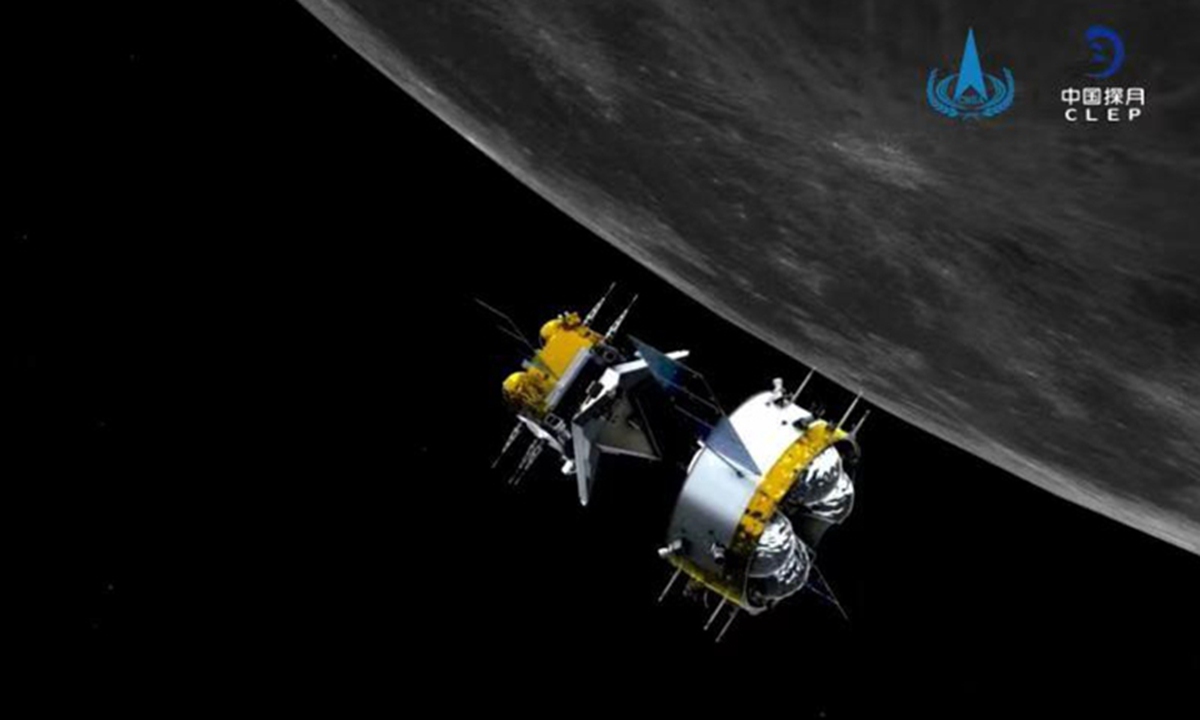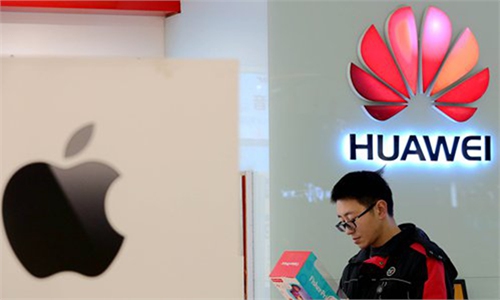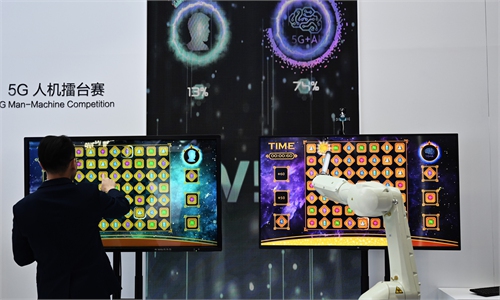
Image released by the China National Space Administration (CNSA) shows the orbiter-returner combination of China's Chang'e-5 probe approaching the ascender. Photo: Xinhua
After completing the first spacecraft rendezvous in lunar orbit, the orbiter-returner of China's Chang'e-5 probe separated from the ascender, waiting for the right time to return to Earth with its lunar samples, the China National Space Administration announced on Sunday.Over the past few days, every move by Chang'e-5 has received a great deal of attention. With many "China firsts" recorded and witnessed, the mission not only marks a milestone in China's aerospace industry development, but also demonstrates China's ability to make breakthroughs in cutting-edge technology, which has contributed to the rapid progress of the lunar-probe program.
The study and exploration of outer space, including the moon, requires many advanced technologies, and it represents a country's scientific and technological strength - as well as its deep pockets. In this sense, the Chang'e-5 mission is a microcosm of China's key scientific and technological progress and innovation, which give the country more leverage in the US-China technology war.
It is almost certain that China will continue to face technology blockades erected by the US in some key technology fields. Judging by the general point of view at present, US President-elect Joe Biden is unlikely to reset the tone on the competitive relationship between the two countries, and the possibility of US politicians ratcheting up efforts to put the screws on Chinese high-tech companies could be still high.
Even if the technology decoupling trend between the US and China doesn't ease or reverse, China won't stop the pace of its technological breakthroughs in key areas.
According to the 14th Five-Year Plan (2021-25) and the Long-Range Objectives through the Year 2035, China will pursue innovation-driven development and take self-reliance in science and technology as the strategic underpinning for national development.
China has the ability and confidence to make its way through independent innovation.
With the integration of the most advanced technologies and the most complicated engineering practices, the aerospace industry is set to march to the head of China's technological innovation and military-civil fusion. The glorious achievements of some representative key state programs, such as the manned spacecraft and the lunar-probe mission, are the fruits of China's consistent pursuit of independent innovation.
Under the government's military-civil fusion policy - which is a customary international practice to promote innovation for both military and civilian development - relevant parts of the manufacturing sector are expected to receive a further boost from key technological breakthroughs. The talent pool in the aerospace sector, as well as research and development strength built up in the core areas in recent decades, will also provide sufficient technological momentum for other industries.


